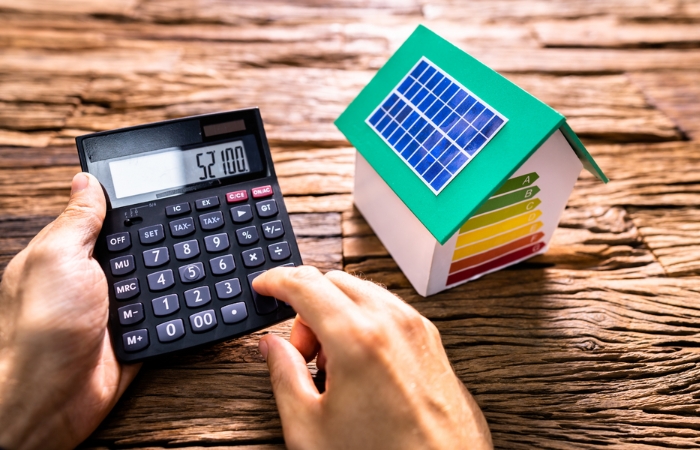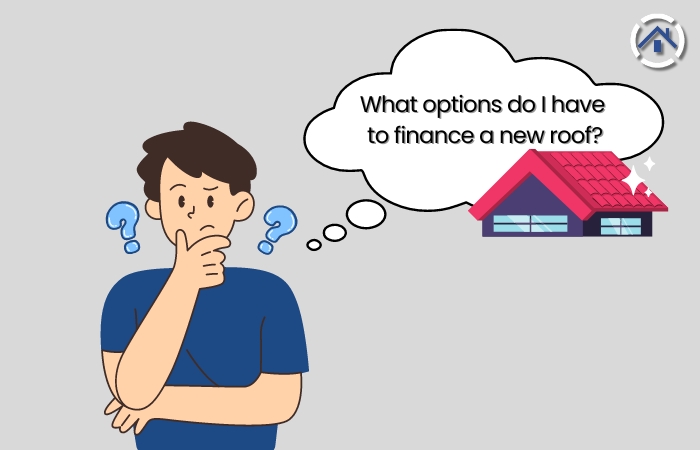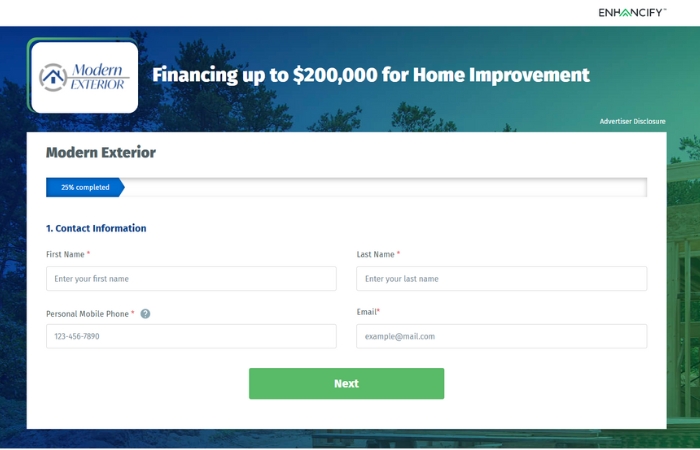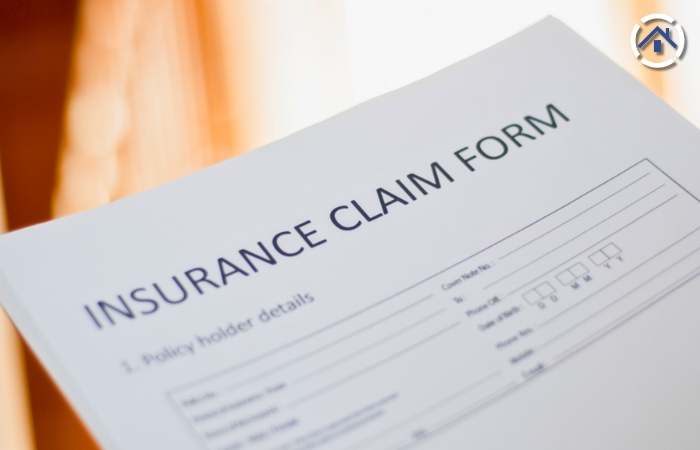
Did you know that the average cost of a roof replacement in the United States can range from $5,000 to $10,000, depending on the size and materials used? In some cases, this cost can even soar to $30,000 for high-end materials or complex installations. Such a significant expense can be a financial burden for many homeowners, making it essential to explore various financing options.
Options for financing a new roof or major repairs are crucial for homeowners because they provide flexibility and affordability. Therefore, this blog aims to explore different financing alternatives accessible to homeowners requiring a new roof or substantial repairs. We will also outline their advantages and disadvantages to assist you in making an informed choice.

Personal Savings are money you set aside from your income for future use. They're kept in accounts that are easy to access, like savings accounts. Personal savings can be used for various purposes, such as major purchases, long-term goals, or simply to ensure financial security.
Emergency Funds are a specific type of personal savings meant to cover unexpected expenses, like medical bills, car repairs, or home maintenance. The goal is to have a financial safety net that helps you manage emergencies without relying on credit or loans.
Benefits of Personal Savings
Drawbacks of Using Personal Savings
A Home Equity Loan is a lump sum loan secured by your home's equity. Equity is the difference between your home's current market value and the outstanding balance on your mortgage. You receive a fixed amount of money upfront and repay it over a set period, usually with a fixed interest rate and monthly payments. This is often used for major expenses like home improvements, debt consolidation, or large purchases.
Home Equity Lines of Credit (HELOCs) is a revolving line of credit secured by your home's equity. It works similarly to a credit card, allowing you to borrow money up to a specific limit as needed. You can draw funds during a draw period (typically 5-10 years) and repay with variable interest rates. After the draw period, there's a repayment period where you can no longer borrow and must pay back the outstanding balance. It is ideal for ongoing expenses or projects requiring flexible access to funds over time.
Pros:
Cons:
Personal loans are a type of unsecured loan that individuals can borrow from banks, credit unions, or online lenders. They are not backed by collateral, which means you don't need to put up any assets like a house or car to secure the loan.
You receive a lump sum of money upfront, which you repay over a fixed period, usually with a fixed interest rate and monthly payments. Loan amounts and terms vary widely depending on the lender's and borrower's creditworthiness.
Pros:
Cons:
A credit card is a financial tool issued by banks, credit unions, or other financial institutions that allows you to borrow funds up to a preapproved limit to make purchases, pay for services, or withdraw cash. When you use a credit card, you essentially take out a short-term loan, which you agree to repay either in whole or over time with interest if you carry a balance beyond the due date.
Credit cards can finance repairs by paying for materials, labor, or any other expenses related to the repair. You swipe the card at the point of sale, and the amount is deducted from your available credit limit.
Pros:
Cons:
1. FHA Title 1 Loans: These loans are backed by the Federal Housing Administration (FHA) and are designed to help homeowners finance home improvements and repairs. They are available for structural and non-structural repairs, with maximum loan amounts varying based on the type of property and the borrower's creditworthiness.
2. USDA Rural Development Loans: The U.S. Department of Agriculture (USDA) offers loans and grants to homeowners in rural areas to make essential repairs and improvements. These loans may cover various repairs, including health and safety hazards, accessibility improvements, and energy efficiency upgrades.
3. HUD Community Development Block Grants (CDBG): CDBG funds are provided to state and local governments to support community development activities, including housing rehabilitation and repair programs. Grants may be used for various eligible activities, such as repairing roofs, upgrading plumbing and electrical systems, and addressing code violations.
Benefits:
Limitations:

Some contractors offer contractor financing, allowing homeowners to finance home improvement projects directly through the contractor. Instead of obtaining financing from a bank or lender, homeowners can apply for a loan or payment plan directly with the contractor.
Pros:
Potential Downsides:
Questions to Ask Your Contractor:
Before agreeing to contractor financing terms, homeowners should ask the following questions to understand the terms and conditions:
1. What Are the Financing Options Available? Ask the contractor for details about the financing options, including interest rates, repayment terms, and associated fees.
2. What Are the Total Costs? To understand the full financial commitment, request a breakdown of the total project cost, including materials, labor, and financing fees.
3. Are There Any Prepayment Penalties? Inquire about any penalties or fees for paying off the loan early, as this can affect your ability to save on interest costs.
4. Is the Financing Secured or Unsecured? Determine whether the financing is secured by collateral, such as a lien on your property, or if it is unsecured.
5. What Happens If There Are Delays or Issues With the Project? Clarify the contractor's policies regarding project delays, disputes, or issues that may arise during the course of the project.
6. Are There Any Promotional Offers or Discounts? Ask if the contractor offers any promotional financing offers, discounts, or incentives for financing through them.
7. Can I Get Preapproval or Prequalification? Inquire about the possibility of preapproval or prequalification for financing to understand your borrowing capacity before committing to a project.

An insurance claim is a formal request made by a policyholder to their insurance company to receive compensation or coverage for a covered loss or damage. When damage occurs to your property, such as your roof, and you believe it is covered under your homeowner's insurance policy, you file a claim with your insurance company to request reimbursement for the cost of repairs or replacement.
When Does Insurance Cover Roof Repairs or Replacement?
Here are some of the situations where your insurance company might cover repairs or replacements:
1. Storm Damage: Damage caused by severe weather events such as windstorms, hailstorms, hurricanes, or tornadoes may be covered by homeowners insurance.
2. Fire Damage: If your roof is damaged or destroyed by a fire, your homeowner's insurance policy typically covers the cost of repairs or replacement.
3. Falling Objects: Your insurance policy may cover damage from falling objects such as tree limbs, debris, or satellite dishes.
4. Water Damage: Some types of water damage, such as that caused by sudden and accidental leaks or burst pipes, may be covered by homeowners insurance. However, damage from flooding or gradual leaks over time may not be covered.
5. Vandalism or Theft: If your roof is damaged by vandalism or materials are stolen, your homeowner's insurance policy may provide coverage for repairs or replacement.
How to Maximize Your Claim?
1. Understand Your Coverage: Familiarize yourself with your insurance policy to understand what types of damage are covered and any limits or exclusions that may apply.
2. Document Everything: Keep thorough damage records, including photographs, videos, receipts, and estimates. Provide this documentation to your insurance company to support your claim.
3. Act Quickly: Report the damage to your insurance company to initiate the claims process.
4. Work with Reputable Contractors: Hire licensed and insured roofing contractors to complete the repairs or replacement. Obtain multiple estimates to ensure you get a fair price for the work.
5. Keep Communication Open: Stay in communication with your insurance company throughout the claims process. Be responsive to any requests for information or documentation.
6. Review Your Settlement Offer Carefully: Review the settlement offer provided by your insurance company carefully to ensure it accurately reflects the cost of repairs or replacement. Don't hesitate to ask questions or seek clarification if needed.
7. Consider Hiring a Public Adjuster: If you have difficulty negotiating with your insurance company or feel your claim is being unfairly denied or undervalued, consider hiring a public adjuster to advocate.
Choosing the best financing option for your new roof and major repairs depends on individual circumstances, including financial stability, creditworthiness, urgency of repairs, and personal preferences. It's essential to assess your financial situation, understand the terms of each option, explore multiple options, and seek expert advice. By taking proactive steps now to evaluate your financial situation and explore suitable financing options, you can ensure your home's long-term safety, integrity, and value.